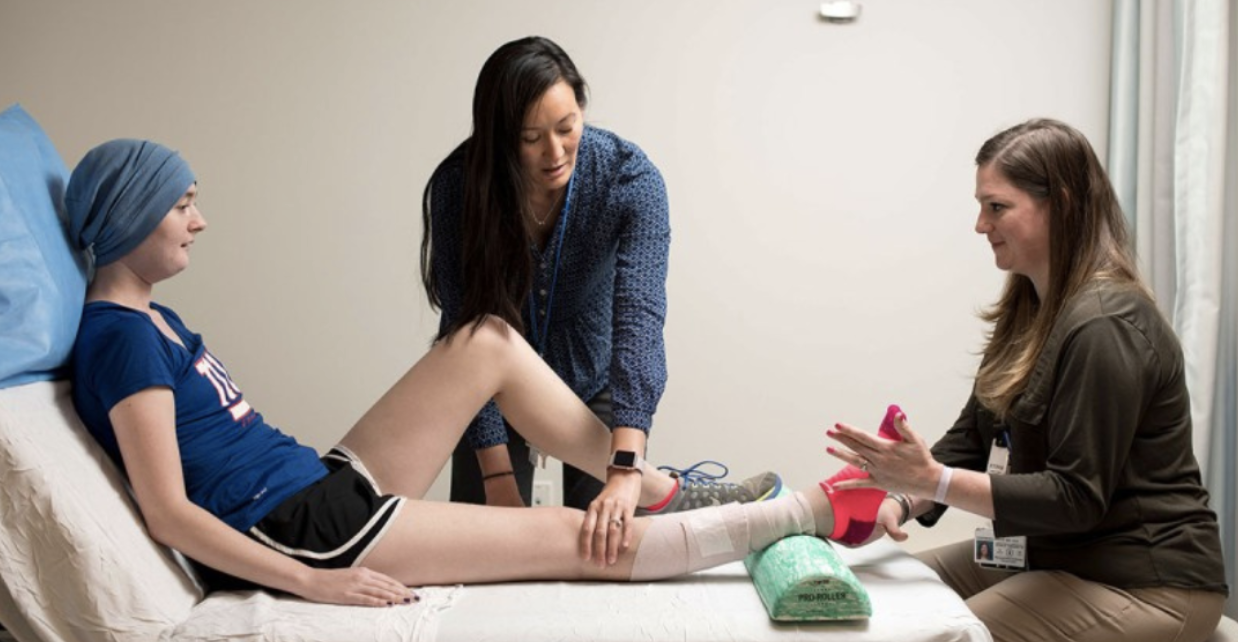Understanding the Challenges of Cancer Pain Management
Managing pain in cancer patients presents unique challenges that require careful attention and specialized care. According to Dr. Dmitri Souza, one of the main challenges is the wide range of pain sources. Pain can stem from the cancer itself, treatments such as surgery or chemotherapy, or even other unrelated conditions. "The main challenge is the variability and complexity of pain sources," Dr. Souza explains.
Each patient’s experience with pain is different, influenced by factors such as age, genetics, overall health, and previous experiences with pain. These variations make it essential to accurately identify the source of pain to provide the most effective treatment.
In addition to physical pain, psychological and emotional factors should be considered. Anxiety, depression, and stress related to a cancer diagnosis can significantly impact the effectiveness of pain management. Patients may also face difficulties communicating their pain levels, either due to fear of addiction to pain medications or concerns about side effects.
The Importance of Accurate Pain Source Identification
Pinpointing the exact source of pain is crucial in treating cancer patients effectively. Dr. Souza emphasizes that understanding whether the pain is directly related to the cancer, a side effect of treatment, or a result of another condition entirely can significantly improve outcomes. "It’s important to pinpoint the source of the pain and treat the exact cause," he says. This targeted approach enhances the effectiveness of treatment and improves the overall quality of life for the patient.
Multidisciplinary Approach to Cancer Pain Management
A multidisciplinary approach to pain management brings together various healthcare professionals to address all aspects of a patient’s pain. Dr. Souza describes this approach as involving a team that typically includes oncologists, pain specialists, palliative care physicians, nurses, physical therapists, psychologists, and social workers. This team works collaboratively to create a comprehensive treatment plan that covers pain management's physical, emotional, and psychological aspects.

The benefits of this approach are clear. By involving multiple specialists, treatment plans can be tailored to meet each patient's specific needs, leading to more effective care. Regular interdisciplinary meetings and the use of shared electronic health records help ensure that all team members are on the same page, which enhances communication and coordination. "This approach helps to create personalized treatment plans and improves the effectiveness of the treatment," says Dr. Souza.
Tailoring Pain Management Plans to Individual Needs
Effective pain management in cancer patients requires a personalized and dynamic approach. Dr. Souza emphasizes the importance of continuous assessment and treatment plan adjustment to meet patients' evolving needs. "It’s important to evaluate the treatment results continuously and adjust as needed," he says. This ongoing evaluation ensures that pain management strategies remain effective as the patient's condition changes.
Identifying the source of pain is a critical first step in creating a personalized treatment plan. For instance, if the pain is related to a tumor compressing a nerve, the treatment will differ significantly from pain caused by chemotherapy-induced neuropathy. Dr. Souza highlights the importance of considering comorbid conditions, such as diabetes, which can exacerbate neuropathic pain, requiring a tailored approach to treatment.
Pharmacological interventions are often customized to the patient’s specific needs. This might involve adjusting dosages of non-opioids, opioids, and adjuvant medications or incorporating interventional procedures like nerve blocks or neurostimulation. Non-pharmacological treatments, such as physical therapy and psychological support, are also essential components of a well-rounded pain management plan. "It’s important to address pain at different stages of cancer and adjust to the patient's condition," Dr. Souza explains.
Pharmacological and Non-Pharmacological Treatments
Managing cancer pain often involves a combination of pharmacological and non-pharmacological treatments. Dr. Souza explains that pharmacological options include non-opioid analgesics like NSAIDs and acetaminophen for mild to moderate pain and opioids for more severe pain. These medications are often used in conjunction with adjuvant analgesics, such as antidepressants and gabapentin, which can be particularly effective for neuropathic pain.
In addition to medication, non-pharmacological treatments play a vital role in managing pain. Physical rehabilitation helps patients maintain function and mobility, while therapies like cognitive behavioral therapy (CBT) address the psychological impact of chronic pain. Alternative therapies, such as massage, Reiki, and heat/cold therapy, can relieve and improve overall well-being.

Addressing Misconceptions About Opioid Use in Cancer Pain Management
There are several misconceptions about opioid use in cancer pain management that can prevent patients from receiving the care they need. "One of the most common misconceptions is the fear of addiction," Dr. Souza says, emphasizing the importance of addressing these concerns directly with patients as this fear may lead patients to underreport their pain or refuse necessary treatment. Dr. Souza notes that this fear can be a significant barrier to effective pain management.
Another common misconception is the belief that side effects from opioids are inevitable and unmanageable. Many side effects can be minimized or controlled with proper management and adjunctive therapies. Additionally, some patients believe that opioids should only be used as a last resort. Still, Dr. Souza clarifies that opioids can be an appropriate and effective option when used carefully and under medical supervision.
By educating patients about the safe and effective use of opioids, healthcare providers can help dispel these myths and ensure that patients receive the most appropriate care for their pain.
The Role of Patient Education in Cancer Pain Management
Patient education is a crucial aspect of managing cancer-related pain. "Education is critical in managing expectations and improving outcomes," Dr. Souza stresses. Educating patients about the nature of their pain, the available treatment options, and realistic outcomes can help reduce anxiety and improve adherence to prescribed treatment plans.

Teaching patients about proper medication use, including managing potential side effects, is essential for ensuring they follow their treatment plans effectively. In addition, providing patients with tools and techniques for self-managing their pain—such as relaxation exercises, physical therapy, and the proper use of pain relief devices—can empower them to take an active role in their care.
Open communication between patients and healthcare providers is crucial to successful pain management. Encouraging patients to speak openly about their pain and concerns allows for more effective adjustments to their treatment plans, ultimately leading to better outcomes. "It’s important to encourage patients to communicate openly about their pain," Dr. Souza says.
Future Trends in Cancer Pain Management
The field of cancer pain management is continually evolving, with new trends and innovations promising to improve patient outcomes. Dr. Souza highlights several exciting developments that could shape the future of pain management for cancer patients.
Personalized medicine, for example, involves tailoring pain management strategies to individual patients based on genetic profiling and biomarker analysis. This approach can lead to more effective and targeted treatments, reducing the trial-and-error process often associated with pain management.
Advanced drug delivery systems, such as transdermal patches and implantable devices, offer new ways to administer pain relief more effectively and with fewer side effects. These innovations provide consistent and controlled delivery of medication, which can be particularly beneficial for managing chronic pain.
Telemedicine is another area of growth that holds promise for cancer pain management. For patients with advanced cancer, telemedicine offers a convenient way to access pain management services without the need to travel, making it easier to manage pain from the comfort of home.
In addition, integrative approaches that combine traditional and alternative therapies are gaining traction. By incorporating practices like acupuncture, massage, and relaxation techniques into conventional pain management plans, healthcare providers can offer a more holistic approach to care.
Finally, wearable technologies and artificial intelligence (AI) are emerging as tools that could revolutionize pain management. Wearable devices that monitor pain levels and physiological responses in real time can provide valuable data to healthcare providers, allowing for more precise adjustments to treatment plans. AI has the potential to predict pain episodes and optimize medication dosing, leading to more personalized and effective pain management strategies.
Chronic pain in cancer patients demands a thoughtful and individualized approach, as highlighted by Dr. Souza. By combining accurate diagnosis, a range of treatment options, and the expertise of a multidisciplinary team, patients can achieve better pain management and improved quality of life. If you or someone you know is facing cancer-related pain, the dedicated professionals at Western Reserve Hospital's Center for Pain Management are here to help. Reach out today to learn how we can support you on your journey to better health.
